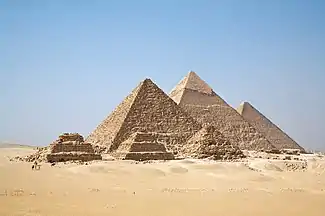Edwin Smith (Egyptologist)
Edwin Smith (1822 – April 27, 1906) was an American dealer and collector of antiquities who gave his name to an Ancient Egyptian medical papyrus, the Edwin Smith Papyrus.
Edwin Smith | |
|---|---|
_B%2526W_photo_of_1847_portrait.JPG.webp) Portrait of Edwin Smith painted 1847 by Francesco Anelli, in the collection of the New-York Historical Society. | |
| Born | 1822 Bridgeport, Connecticut |
| Died | April 27, 1906 (aged 83–84) |
| Nationality | American |
| Occupation | dealer and collector of antiquities |
| Known for | Edwin Smith Papyrus |
| Wikimedia Commons has media related to Edwin Smith. |
Biography
Smith was born in Bridgeport, Connecticut,[1][2] and lived in Egypt during the latter half of the 19th century. In 1862 he came temporarily into possession of a medical papyrus which was sold by its Egyptian owner to Georg Ebers in 1873 and published by Ebers in 1875.[3] It was thus best known as the Ebers Papyrus.
In 1862 he also purchased the papyrus which came to bear his name, from a dealer called Mustapha Aga at Luxor.[4] Smith's knowledge of hieratic was not sufficient to enable him to translate the papyrus, a task which was undertaken by James Henry Breasted, aided by Arno B. Luckhardt, a professor of physiology, and led to the publication of the translation in 1930.
Edwin Smith died in 1906.
Footnotes
- Frederick G. Kilgour Journal of the American Society for Information Science, Volume 44, Issue 5 , Pages 292 - 297, 1993.
- Breasted (1922), p.9
- Clagett (1995), p.193
- Breasted (1922), p. 30
References
- Marshall Clagett, Ancient Egyptian Science: A Source Book, vol. II, Calendars, Clocks, and Astronomy, 1995, ISBN 9780871692146.
- James Henry Breasted (editor), The Edwin Smith Surgical Papyrus: Hieroglyphic Transliteration, Translation and Commentary, 1922, New-York Historical Society
